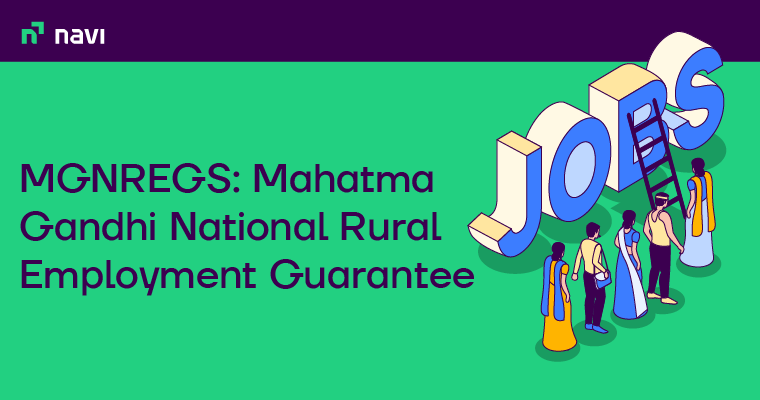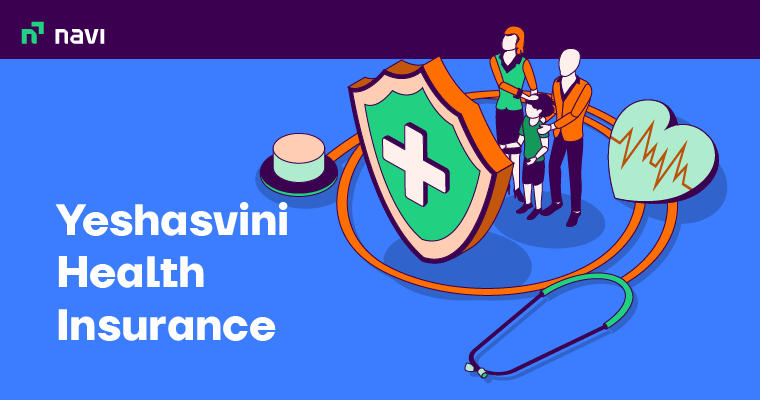Out Of Pocket Maximum Vs Deductible – Differences and How to Select the Best Plan

In health insurance policies, a deductible refers to the amount of money an insured person will need to spend before his/her insurance policy takes over. On the other hand, the out-of-pocket maximum refers to the ceiling on the deductible amount payable in a year. Before you buy health insurance, here’s a clear overview of out-of-pocket vs deductible. Take a look!
What is Deductible in Health Insurance
Deductible in health insurance is the out-of-pocket medical expenses one has to pay to make up the deductible amount before making a claim. In other words, the insurer will cover the claim only when it is over the deductible amount.
Let us say that you have an insurance policy with Rs.25,000 deductible, and make a claim of Rs.1,00,000 for medical bills. In this case, you have to pay Rs.25,000 out of your pocket, while the insurer will take care of a certain portion of the rest.
Most insurance plans, including individual and group health insurance policies, come with a deductible. However, some plans like HMO (Health Maintenance Organisation) come with very low or no deductible. Generally, plans with lower deductibles come with higher premiums, while those with lower premiums carry a higher deductible.
Insurance companies introduced deductibles to limit the number of policyholders filing small or unnecessary claims. As a part of this cost that has to be borne by the insured, claimants become more responsible and make only genuine claims.
What is Out of Pocket Maximum and How Does it Work?
An out-of-pocket maximum is a cap or limit on the amount of money one has to pay for medical expenses covered by his/her insurance plan. After medical expenses cross this limit, the insurer will pay 100% of all covered costs throughout the plan year.
Co-pays, co-insurance and out-of-pocket money spent towards the deductible also count towards the out-of-pocket maximum. However, this varies between different policies, and in some, you may need to get expenses like diagnostic exams authorised in advance. Otherwise, an insurer can deny these charges resulting in the payments not counting towards the threshold limit.
If the insurance in the above example had an out-of-pocket maximum of Rs. 75,000, it would have covered part of the total expenses. This would include co-insurance of Rs.50,000 after you paid the Rs.25,000 deductible out-of-pocket and until it crossed the Rs.75,000 limit. After that, all medical expenses covered by this policy would be completely free.
What Expenses Count Towards Deductibles?
Expenses that count and do not count for meeting the deductible will vary from plan to plan. The following expenses qualify for deductibles:
- Prescription drugs usually count towards the prescription benefit deductible.
- In-network services also count towards the deductible.
- Depending on the policy, copayments or coinsurance can qualify.
- Costs incurred upon hospitalisation.
- Amount spent on doctors’ fees, surgery, lab tests, and medical devices.
Preventive care services like annual check-ups do not count towards meeting the deductible if the health plan partially/full covers it. Services received from outside network providers, monthly premiums and treatments/medications outside policy cover are also excluded.
What Expenses Count Towards Out-of-Pocket Maximum?
All medical expenses that go towards the deductible also count towards the out-of-pocket maximum. This includes copayments and coinsurance as well as costs of lab tests, scans, medical devices, surgery fees, etc. After crossing the deductible, any essential medical care will also count towards the out-of-pocket max.
For health plans covering only in-network expenses, any out-of-pocket expenses for covered benefits will go towards the limit. On the other hand, plans covering health services outside the network often have a different out-of-pocket maximum for in-network and out-of-network services.
However, the following expenses do not count towards the out-of-pocket maximum:
- Treatments and medications are not covered by a policy.
- Monthly premiums.
- Healthcare services are billed in different years.
- Diagnostic tests or specialist visits are made without prior authorisation.
- Treatments not covered by the insurance.
Out-of-Pocket vs Deductible
At first, your payment of medical bills goes towards the deductible. Then, you get cost-sharing benefits depending on the policy terms till your spending reaches the out-of-pocket maximum.
Plans with higher premiums usually come with a lower deductible and out-of-pocket maximum. Lower deductibles offer cost-sharing benefits of insurance plans sooner, while low out-of-pocket max provides increased protection from major complications.
On the other hand, high deductibles can be a decent choice for individuals with good health but need cover from significant hospital bills. Having a higher out-of-pocket max comes with the advantage of a lower premium but comes with the biggest risks for significant healthcare.
Out-of-Pocket Maximum vs Deductible: Timeline
Most health insurances come with yearly deductibles, copayments and coinsurance amounts. The following example will help you understand the timeline of you reaching your out-of-pocket maximum.
Example:
Suppose the annual deductible of your health insurance policy is set as Rs.25,000.
In February, you visit the hospital for a stomach infection. The total bill after your hospital visit is Rs.10,000.
- You will have to pay Rs.10,000 as your out-of-pocket expense. The health insurance provider will not pay anything because the deductible hasn’t been met yet.
- Rs.10,000 will be credited towards your deductible. Rs.15,000 is remaining before the deductible is met.
In August, you get hospitalised again due to a fractured arm. The total hospital expenses turn out to be Rs.17,000.
- You will have to pay Rs.15,000. Now you have met your annual deductible of Rs.25,000.
- You will then need to pay any copayments or coinsurance amounts mentioned in the health care plan. These are fixed amounts that you pay for medical expenses after the deductible is met.
- Your health insurance provider will pay the rest of the bill.
In October, you visit the hospital again due to a high fever. Your total emergency medical bill is Rs.5,000.
- You do not have to pay anything for your deductibles as you have reached the maximum amount.
- Your health insurance provider will pay the entire bill minus your copayment/coinsurance if any.
- If you have reached your annual out-of-pocket maximum (deductibles + copayments + coinsurance), the health insurer will cover all of your medical expenses for the rest of the year.
This process will start again next year. However, some plans do not follow the calendar year. Make sure to be informed about the starting and ending months of your plan.
What are High Deductible Health Plans?
High Deductible Health Plans (HDHP) have higher deductibles than traditional health insurance plans. They charge low monthly premiums for these, but the annual deductible is on the higher side.
HDHPs are best-suited for young and healthy individuals who do not anticipate high medical expenses. They can save money by paying low monthly premiums and getting health coverage for medical emergencies.
How Can You Benefit from the Out-of-Pocket Maximum of Your Health Plan?
Follow the given tips to make the most of the out-of-pocket maximum of your health plan:
- If you have pre-existing medical conditions and may need expensive treatments, choose a plan with low out-of-pocket max.
- Get prior authorisation for MRIs, blood tests, X-rays etc., to ensure your insurer cannot deny any of the expenses.
- Use the free preventive care services and annual check-ups to deal with health problems before they get out of hand.
- Plan your medical expenses (e.g. scheduled surgery or imaging procedure) in advance whenever possible.
- Take the services from your insurer’s network whenever possible, as only in-network services count towards the deductible.
- Know the terms and conditions of your plan well and avoid medications and treatments that the policy does not cover.
Also Read
Final Word
Knowledge of deductible versus out-of-pocket can help you select the best health policy. Plans with deductibles and out-of-pocket maximums generally have low-cost premiums and offer financial coverage beyond the limits. If you need routine medical care, you may want such plans to safeguard yourself from sudden and high expenses.
However, if you are generally healthy and take annual health check-ups, your yearly costs may not even meet the deductible. In such cases, you might want to choose Navi’s health insurance policies for comprehensive health benefits and an easy claims process. Download the Navi app from Google Play Store for cashless treatment facilities from 10,000+ hospitals in India.
FAQs
Ans: Yes. For the same policy, the deductible is the first threshold for cost-sharing benefits. After your total medical expenses cross the out-of-pocket maximum, your health insurance policy will cover 100% of included health services.
Ans: Young people without any known health problems can choose these policies for low-cost premiums. People with medical problems can choose plans with low deductibles and out-of-pocket maximum for more savings on medical bills.
Ans: Co-insurance refers to the percentage of covered medical services that you pay after your annual expenses have already crossed the deductible. Co-payment is a fixed amount that you have to pay when receiving healthcare services.
Ans: In family health insurance policies, the out-of-pocket expenses for an individual above the deductible go towards the family out-of-pocket maximum. This makes it easier to cross the threshold limit, which results in the plan covering 100% of everyone’s medical bills.
Ans: In health insurance plans with a voluntary deductible, you can choose a deductible amount you are comfortable with. In the case of compulsory deductible, the insurance company sets up this amount as per its own rules.
Ans: The annual deductible in a health insurance plan is the yearly amount a policyholder has to pay before the insurance company starts paying for the medical expenses. The annual deductible varies across different health insurance plans. Plans with low monthly premiums usually set a high annual deductible limit, and vice versa.
Ans: The out-of-pocket maximum limit caps the amount a policyholder has to pay for medical expenses in a year. After meeting the out-of-pocket maximum, the policyholder will not have to pay for medical costs covered under the health insurance plan. The health insurance company will pay 100% of the medical expenses as per their policy.
Before you go…
How about an affordable health insurance policy 👨⚕️ starting at a monthly premium of just ₹235? Install the Navi app now and get your policy in under 2 minutes.
Disclaimer: This article has been prepared on the basis of internal data, publicly available information and other sources believed to be reliable. The information contained in this article is for general purposes only and not a complete disclosure of every material fact. It should not be construed as investment advice to any party. The article does not warrant the completeness or accuracy of the information, and disclaims all liabilities, losses and damages arising out of the use of this information. Readers shall be fully liable/responsible for any decision taken on the basis of this article.
Health Insurance Knowledge Base

What is the Full Form of MGNREGS – Eligibility and How to Apply?
MGNREGS Full Form The full form of MGNREGS is Mahatma Gandhi National Rural Employment Guarantee... Read More »TPA in Health Insurance – Meaning, Full Form, Functions and Roles
TPA (full form - Third Party Administrator) is a licensed intermediary between health insurance pol... Read More »5 Best Cancer Insurance Policy in India 2023 – Types and Benefits
Cancer insurance plans can give individuals and families financial protection from expensive cancer... Read More »10 Best Cashless Health Insurance Policy in India 2023 – Taxation and Cover
Cashless health insurance plans are policies that provide medical coverage to policyholders without... Read More »6 Best Critical Illness Insurance Companies in India 2023
Critical illness insurance is a type of health insurance policy that protects against fatal illness... Read More »10 Best Personal Accident Insurance Policy in India 2023
Accident insurance plans provide financial assistance to the policyholder in the event of an unfort... Read More »Best Health Insurance for Parents in India 2023 and How to Buy?
Health insurance for parents offer several perks, including a higher insured sum and full coverage ... Read More »Best Dental Insurance Plans in India 2023: Benefits, Types and How to Claim?
Dental insurance plans are policies that provide cover for expenses arising out of standard dental ... Read More »7 Best Health Insurance for Newborn in India 2023 – Benefits and Cover
Health insurance for newborns are crucial in today’s time. When you are a new parent, the safety ... Read More »Yeshasvini Health Insurance Scheme: Apply for Yeshasvini Health Card Online
Everyone should have access to quality, affordable healthcare. Yeshasvini Health Insurance Scheme i... Read More »5 Best Diabetes Health Insurance in India 2023 – Top Plans, Cover and Benefits Offered
Diabetes Health Insurance plans are specifically designed insurance covers for people who have diab... Read More »Best Family Floater Health Insurance Plans in India (2023)
A family floater health insurance plan covers the medical expenses of the entire family. It is more... Read More »Top 10 Chit Fund Schemes in India in 2023
Chit funds are one of the most popular return-generating saving schemes in India. It is a financial... Read More »10 Best Gold ETFs in India to Invest in April 2023
Gold ETFs or Gold Exchange Traded Funds are passively managed funds that track the price of physica... Read More »10 Best Demat Accounts in India for Beginners in 2023
Creation of Demat accounts revolutionised the way trades were conducted at the stock exchanges. It... Read More »20 Best Index Funds to Invest in India in April 2023
What is an Index Fund? An index fund is a type of mutual fund or exchange-traded fund (ETF) that... Read More »Best Arbitrage Mutual Funds to Invest in India in April 2023
Arbitrage funds are hybrid mutual fund schemes that aim to make low-risk profits by buying and sell... Read More »10 Best SIP Plans in India to Invest in April 2023
What is SIP? SIP or Systematic Investment Plan is a method of investing a fixed amount in ... Read More »10 Best Corporate Bond Funds in India to Invest in April 2023
Corporate bond funds are debt funds that invest at least 80% of the investment corpus in companies ... Read More »10 Best Bank for Savings Account in India [Highest Interest Rate 2023]
Savings account is a type of financial instrument offered by several banks. It lets you safely depo... Read More »
































